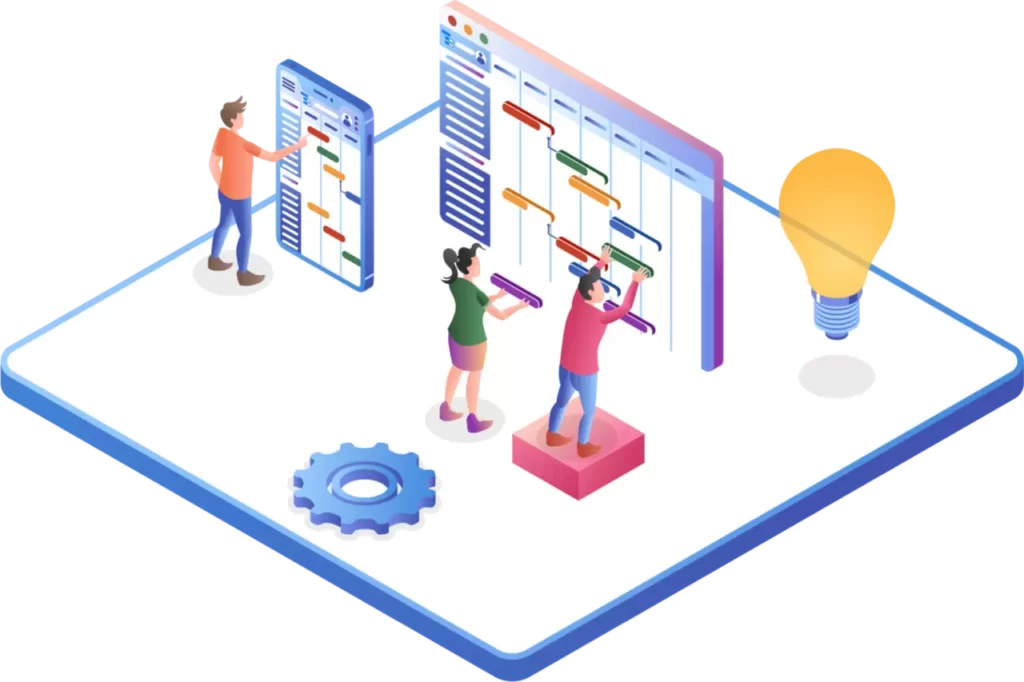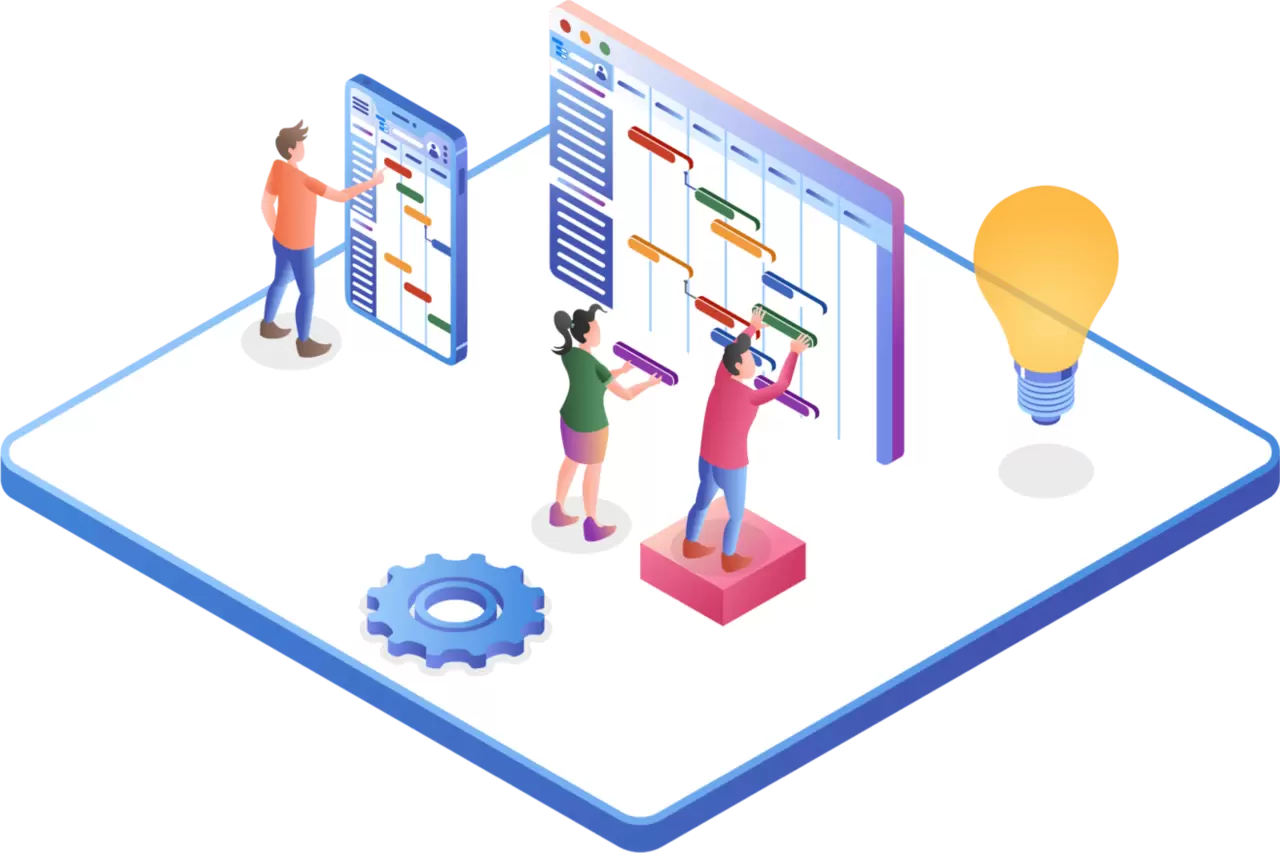Last Updated on March 11, 2023 by Eng Katepa
Problem solving is the process of achieving a goal by overcoming obstacles, a regular part of most activities. Problems in need of solutions range from simple personal tasks (e.g. how to turn on an appliance) to complex issues in business and technical fields.
Engineers are problem solvers; employers hire them specifically for their problem-solving skills. As essential as problem-solving is, it is impossible to teach a specific approach that will always lead to a solution.
Although engineers use science to solve problems, this skill is more art than science. The only way to learn problem-solving is to do it; thus, your engineering education will require you to solve thousands of homework problems.
In the modern world, computers are often used for problem-solving. The novice student may think that the computer is actually solving the problem. but this is untrue. Only a human can solve problems; a computer is merely a tool.
How Problem-Solving Skills Work
Problem-solving starts with identifying the issue. For example, a teacher might need to figure out how to improve student performance on a writing proficiency test.
To do that, the teacher will review the writing tests looking for areas of improvement. They might see that students can construct simple sentences, but they’re struggling with writing paragraphs and organizing those paragraphs into an essay.
To solve the problem, the teacher would work with students on how and when to write compound sentences, how to write paragraphs, and ways to organize an essay.
Types of Problems
A problem is a situation, faced by an individual or a group of individuals, for which there is no obvious solution. There are many types of problems that we confront:
- Research problems require that a hypothesis be proved or disproved. A scientist may hypothesize that CFCs (chlorofluorocarbons) are destroying the earth’s ozone layer. The problem is to design an experiment that proves or disproves the hypothesis. If you were confronted with this research problem, how would you approach it?
- Knowledge problems occur when a person encounters a situation that he does not understand. A chemical engineer may notice that the chemical plant produces more products when it rains. The cause is not immediately obvious, but further investigation might reveal that heat exchangers are cooled by the rain and hence have more capacity.
- Troubleshooting problems occur when equipment behaves in unexpected or improper ways. An electrical engineer may notice that an amplifier has a 60-cycle hum whenever the fluorescent lights are turned on. To solve this problem, she determines that extra shielding is required to isolate the electronics from the 60-cycle radiation emitted by the lights.
- Mathematics problems are frequently encountered by engineers, whose general approach is to describe physical phenomena with mathematical models. If a physical phenomenon can be described accurately by a mathematical model, the engineer unleashes the extraordinary power of mathematics, with it rigorously proved theorems and algorithms, to help solve the problem.
- Resource problems are always encountered in the real world. It seems there is never enough time, money, or people. or equipment to accomplish the task. Engineers who can get the job done in spite of resource limitations are highly prized and well rewarded.
- Social problems can impact engineers in many ways. A factory may be located where there is a shortage of skilled labor because the local schools are of poor quality. In this environment, an engineer running a training program for factory workers must design the program to accommodate the low reading abilities of the trainees.
- Design problems are the heart of engineering. Solving them requires creativity, teamwork, and broad knowledge. A design problem must be properly posed. If your boss said. “Design a new can– you would not know whether to design an economy car, a luxury car, or a sport/utility vehicle. A well-posed design problem must include the ultimate objectives of the design project. If the boss said, “Design a car that goes from 0 to 60 miles per hour in 6.0 seconds, gets 50 miles-per-gallon fuel economy, costs less than $10,000, meets government pollution standards, and appeals to aesthetic tastes,” then you could begin the project—even though it has difficult objectives.
Also Read: Landfill: General Overview
Problem Solving Approach
The approach to solving an engineering problem should proceed in an orderly, stepwise fashion. The early steps are qualitative and general, whereas the later steps are more quantitative and specific. The elements of problem-solving can be described as follows:
- Problem identification is the first step toward solving a problem. Students, this step is done for them when the professor selects the homework problems. In the real engineering world, this step is often performed by a manager or creative engineer.
As an example, the management of an automotive firm may be painfully aware that the firm is losing market share. They challenge the engineering staff to design a revolutionary automobile to gain back lost sales.
- Synthesis is a creative step in which parts are integrated together to form a whole.
For example, the engineers may determine that they can meet the design objectives for the new car (high fuel economy and rapid acceleration) by combining a highly efficient engine with a sleek, aerodynamic body.
- The analysis is the step where the whole is dissected into pieces. Most of your formal engineering education will focus on this step. A key aspect of the analysis is to translate the physical problem into a mathematical model. The analysis employs logic to distinguish truth from opinion, detect errors, make correct conclusions from evidence, select relevant information, Identify gaps in information, and identify the relationship between parts.
For example, the engineers may compare the drag of a number of different body types and determine if the engine can fit under the hood of each body.
- Application is a process whereby appropriate information is identified for the problem at hand.
For example, the engineers determine that a key question is to find the required force needed to propel the automobile at 60 mph at sea level, knowing the car has a projected frontal area of 19m. square and a drag coefficient of 0.25.
- Comprehension is the step in which the proper theory and data are used to actually solve the problem.
Although we would like to believe that these five steps can be followed in a linear sequence that always leads us to the correct solution, such is not always the case.
Often, problem-solving is an iterative procedure, meaning the sequence must be repeated because information learned at the end of the sequence influences decisions early in the sequence.
For example, if the engineers determine that the force calculated in Step 5 is too high, they would have to return to earlier steps and try again.
Also Read: Biggest Cement Companies in USA in 2022
Problem Solving Skills
Problem-solving is a process in which an individual or a team applies knowledge, skills, and understanding to achieve the desired outcome in an unfamiliar situation. The solution is constrained by physical, legal, and economic laws as well as by public opinion.
To become a good problem solver, the engineer must have the following:
- Knowledge (first acquired in school, but later on the job).
- Experience to wisely apply knowledge.
- Learning skills to acquire new knowledge.
- Motivation to follow through on tough problems.
- Communication and leadership skills to coordinate activities within a team.
Reductionism contrasts with synthesis, the creative process of putting pieces together. If your problem were to design an airplane, you would use reductionism to design subsystems (engines, landing gear, electronic controls, etc.) and synthesis to combine the pieces together.
Techniques for Error-free Problem Solving
All students hope to do error-free problem-solving because it assures them of excellent grades on homework and exams. Further, error-free calculations will be required when the student enters the engineering workforce.
The truth is that engineers can never be certain that their answer is correct. A civil engineer who goes through elaborate calculations to design a bridge cannot be certain of her calculations until a heavy load is placed on the bridge and the deflection agrees with her calculations. Even then there is uncertainty, because there may be errors in the calculations that tend to cancel each other.


Although we can never be certain our answer is correct, we can increase the probability of calculating a correct answer using the following procedure:
Given:
- Always draw a picture of the physical situation.
- State any assumptions.
- Indicate all given properties on the diagram with their units.
Find:
- Label unknown quantities with a question mark.
Relationships:
- From the text, write the main equation that contains the desired quantity. (If necessary, you might have to derive the appropriate equation.)
- Algebraically manipulate the equation to isolate the desired quantity.
- Write subordinate equations for the unknown quantities in the main equation. Indent to indicate that the equation is subordinate. You may need to go through several levels of subordinate equations before all the quantities in the main equation are known.
Solution:
- After all algebraic manipulations and substitutions are made, insert numerical values with their units.
- Ensure that units cancel appropriately. Check one last time for a sign error.
- Compute the answer.
- Clearly mark the final answer. Indicate units.
- Check that the final answer makes physical sense!
- Ensure that all questions have been answered.
Notice that the first step in solving an engineering problem is to draw a picture. We cannot overstate the importance of graphics in engineering. Solving most engineering problems requires good visualization skills. Further, communicating your solution requires the ability to draw.
The above procedure is a process of working backward. You start from the end with the unknown, desired quantity and work backward using the given information.
Not every problem fits into the paradigm described above, but if you use it as a guide, it will increase the likelihood of obtaining a correct answer. Notice that units are emphasized. Most calculation errors result from a mistake with units.
It goes without saying that the solution should be as neat as possible so it can be easily checked by another person (a co-worker or boss). Calculations should be performed in pencil so changes can be made easily.
It is recommended that you use a mechanical pencil because it does not need to be sharpened. A fine (0.5-mm diameter), medium-hardness lead works best. Any erasures need to be completed.
Most engineering professors prefer that students use engineering analysis paper because it has a light grid pattern that can be used for graphing or drafting. It also has headings and margins that allow the calculations to be labeled and documented. Use one side of the paper only. If at all possible, complete the solution on a single page: this allows for easy checking.
Estimating
The final step in solving a problem is to check the answer. One can accomplish this by working on the problem using a completely different method, but often there is no time for this. Instead, a very valuable approach is to estimate the answer.
The ability to estimate comes with experience. After many years of working on similar problems, an engineer can “feel” if the answer is in the right ballpark.
As a student, you do not have experience, so estimating may be difficult for you; however, your inexperience is not an excuse for failing to learn how.
If you cultivate your estimating abilities, they will serve you well in your engineering career. It has been our experience that much business is conducted over lunch, using napkins for calculations and drawings. An engineer who has the ability to estimate will impress both clients and bosses.
A question we often hear from students is, How do I make reasonable assumptions during the estimation process? There is no quick and simple answer.
One of the reasons that “has broad interests” and “collects obscure information” are included among the traits of a creative engineer is that these traits will supply you with raw data and cross-checks for reasonableness when making estimations.
With practice and experience, you will become better. Notice how much your skills improve with the few examples you do in the classroom and for homework. After working in a particular engineering field for a while, many estimations will become second nature.
Also Read: Water Supply Design | Water Sources and Storage Tanks
How to improve your problem-solving skills
There are several methods you can use to improve your problem-solving skills. Whether you are searching for a job or currently working, improving your problem-solving skills and associated abilities will help make you a strong candidate and employee.
- Acquire more technical knowledge in your field
Depending on your industry, it may be easier to solve problems if you have strong working technical knowledge. You can more technical knowledge through additional coursework, training, or practice.
- Seek out opportunities to problem solve
By putting yourself into new situations, you are more likely to be exposed to opportunities to problem solve. You may find there are opportunities to volunteer for new projects in your current role, on another team, or outside the workplace for another organization.
- Do practice problems
Practice and role-play can be useful tools when learning to develop your problem-solving skills. You can find professional practice books for your industry and problem-solving scenarios online. Practice how you might solve those problems and determine if your potential solutions are viable.
For example, in customer service you might find a scenario like, “How would you handle an angry customer?” or “How do you respond when a customer asks for a refund?” Practicing how you might handle these or other scenarios common in your industry can help you call upon solutions quickly when they arise on the job.
- Observe how others problem solve
You may have colleagues who are skilled problem solvers. Observing how those colleagues solve problems can help you improve your own skills. If possible, ask one of your more experienced colleagues if you can observe their techniques. Asking relevant questions can be helpful in applying them in your own career.
Key Points
Problems are an inescapable part of life, both in and out of work. So we can all benefit from having strong problem-solving skills.
It’s important to understand your current approach to problem-solving and to know where and how to improve.
Define every problem you encounter – and understand its complexity, rather than trying to solve it too soon.
There’s a range of general problem-solving approaches, that help you to generate possible answers, choose the best ones, and then implement your solution.
Some complicated or serious problems require more specific problem-solving systems, especially when they relate to business processes.
By boosting your creativity, decision-making, and project management skills, you’ll become even better at solving all the problems you face.
We hope this article helped you learn about Problem Solving | All Skills You Need To Know. You may also want to learn about The Best Construction Management Schools Right Now, Best Types of Kitchen | All You Need To Know- Right Now, Home Furniture | Meaning and Type, and What is an Architect?
If you liked this article, please Join WebsiteForEngineers on Telegram, and you can also find us on Pinterest, Twitter, and Facebook.

